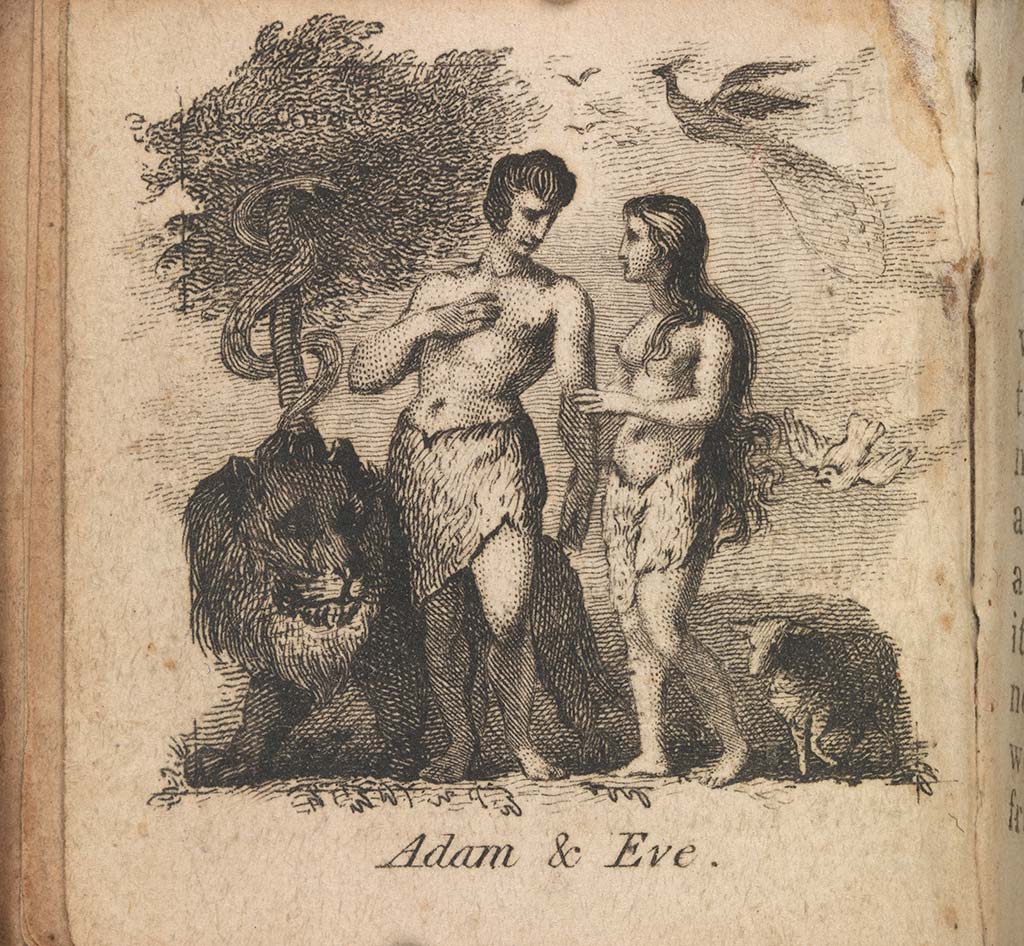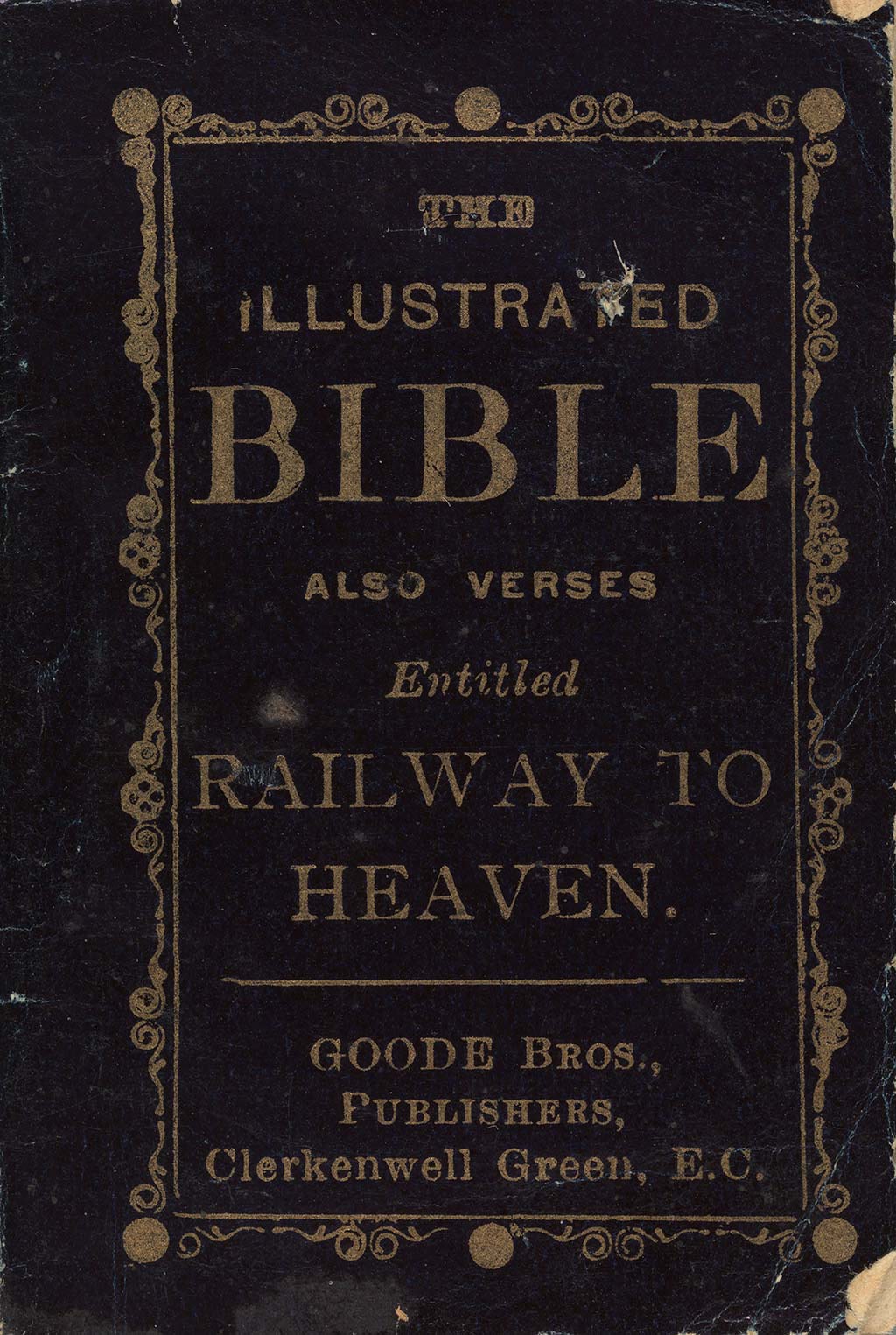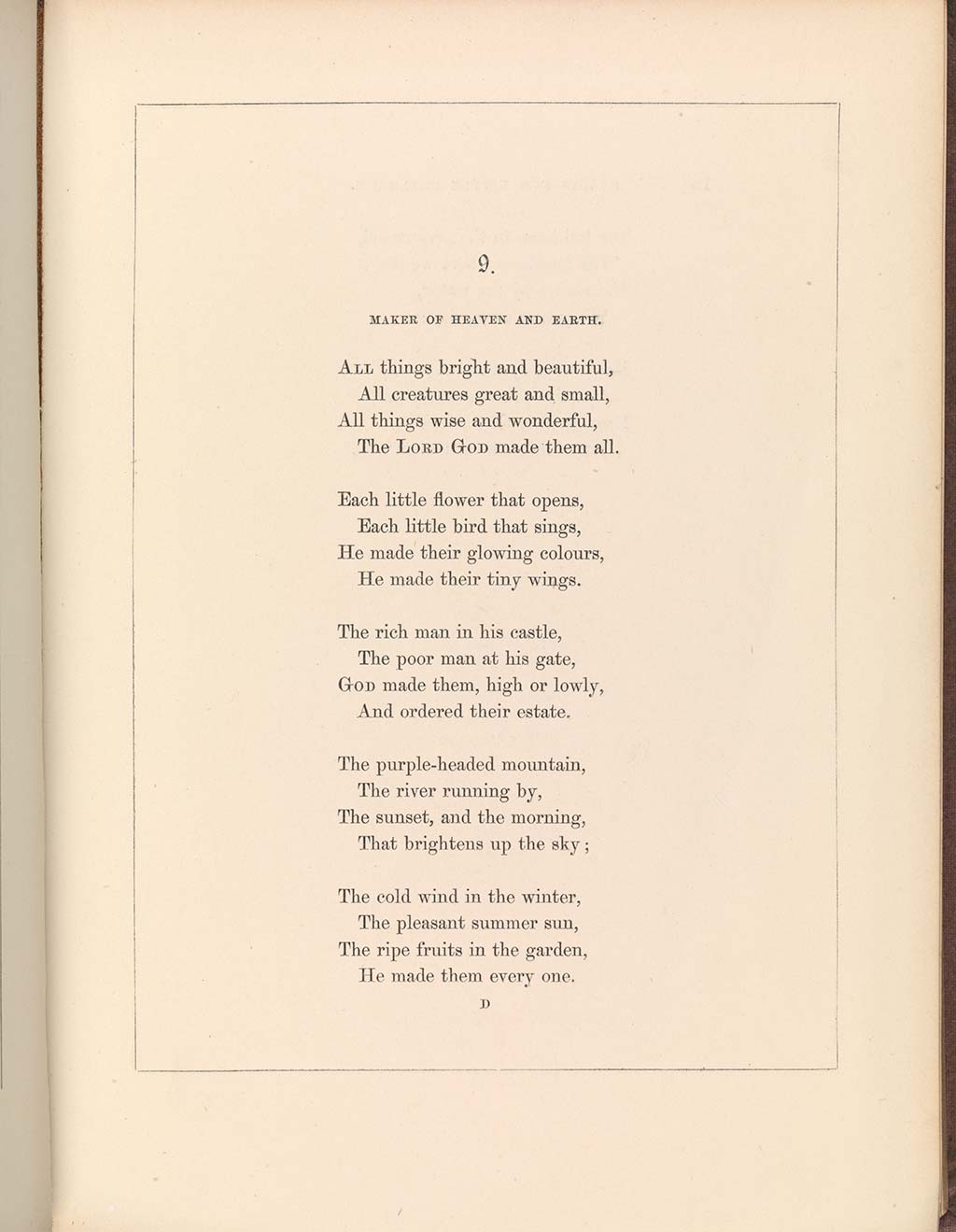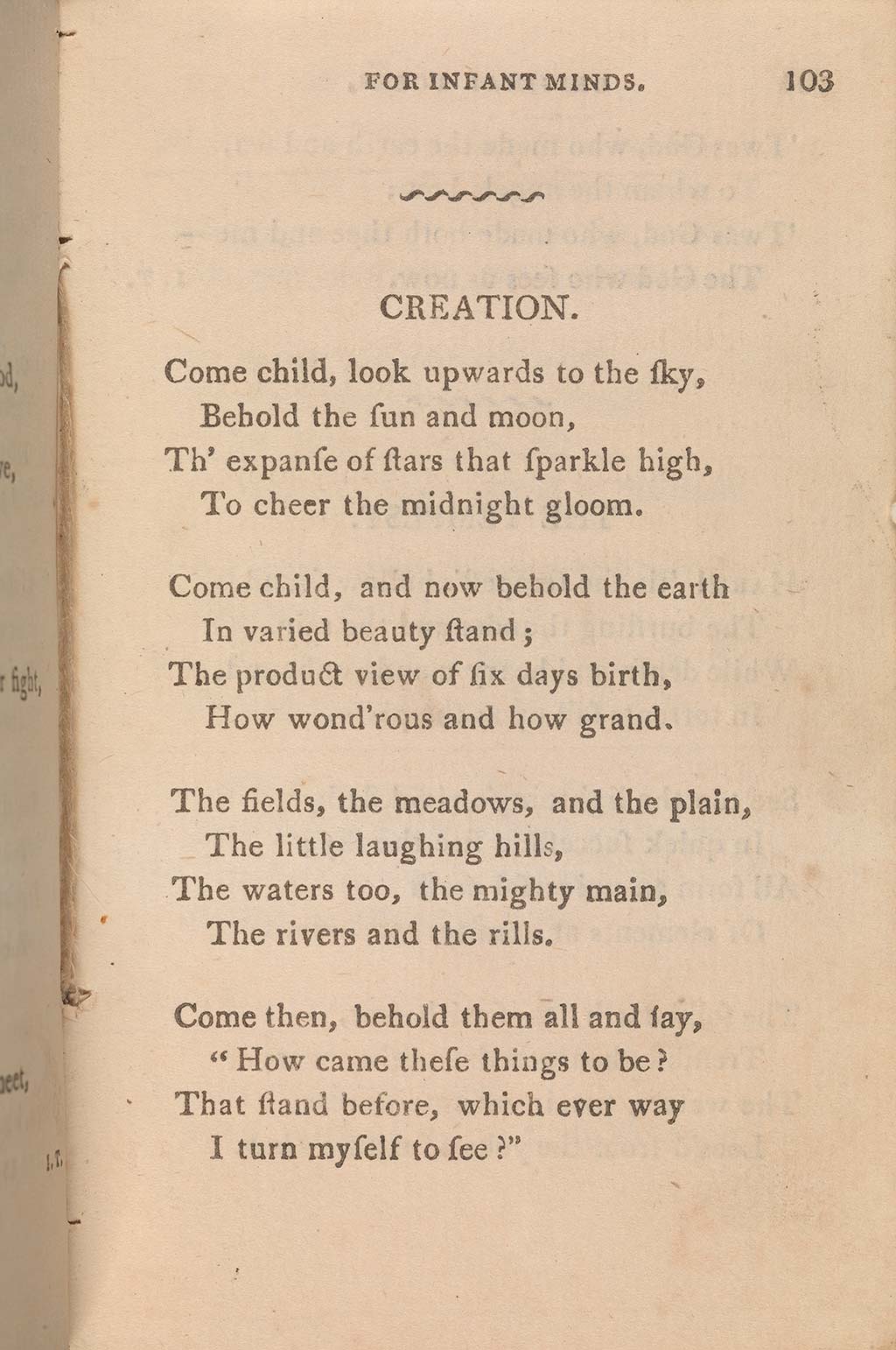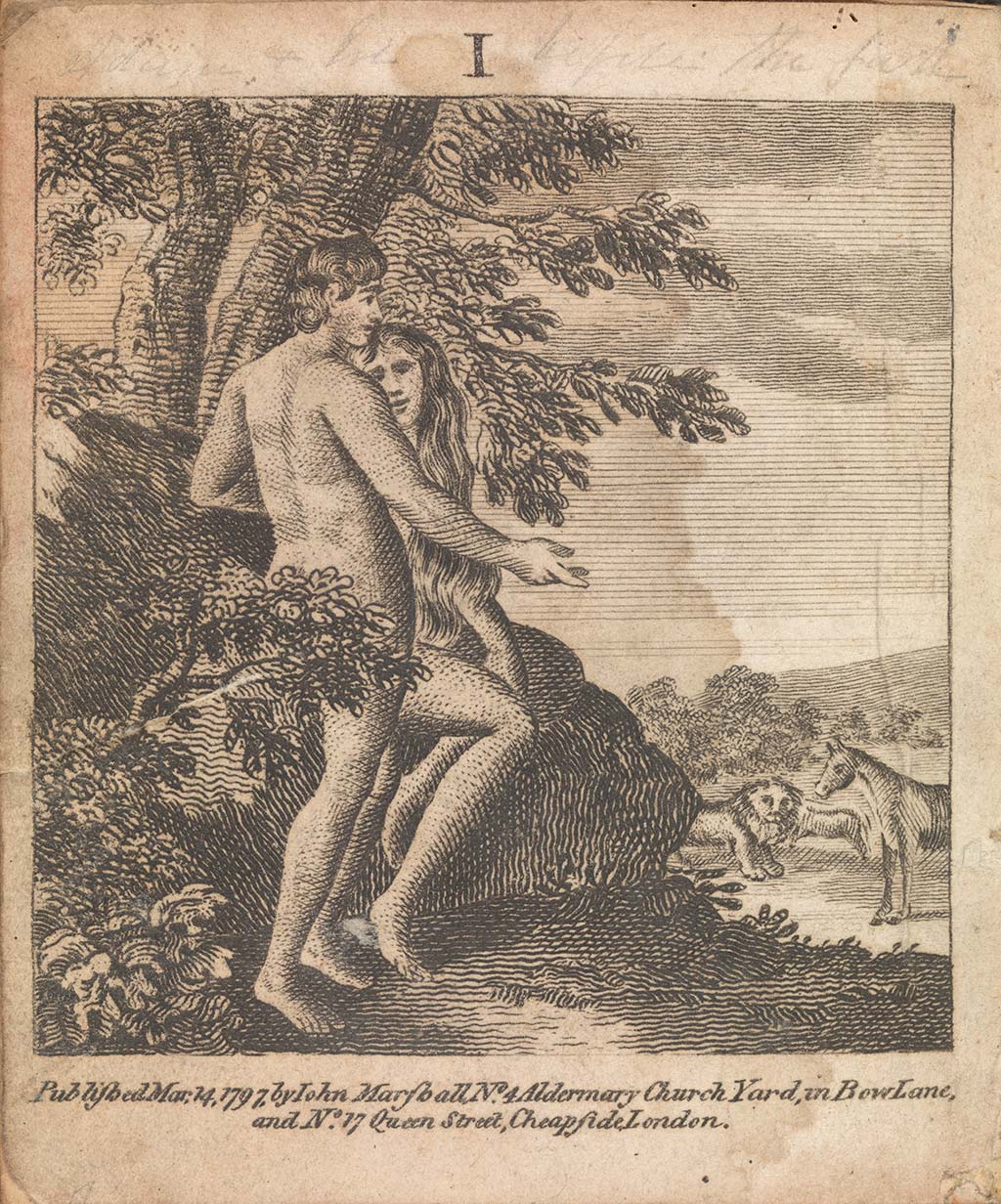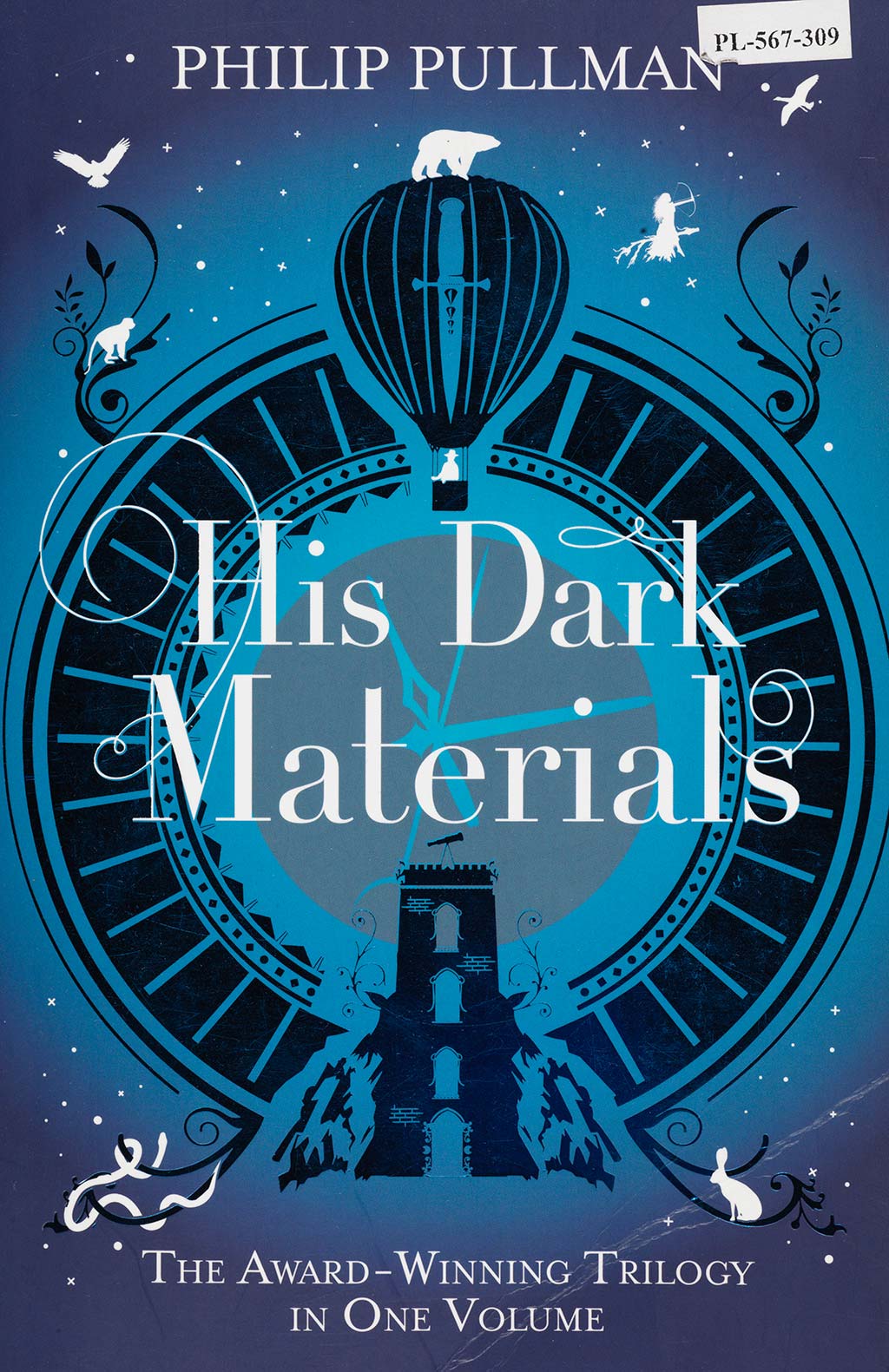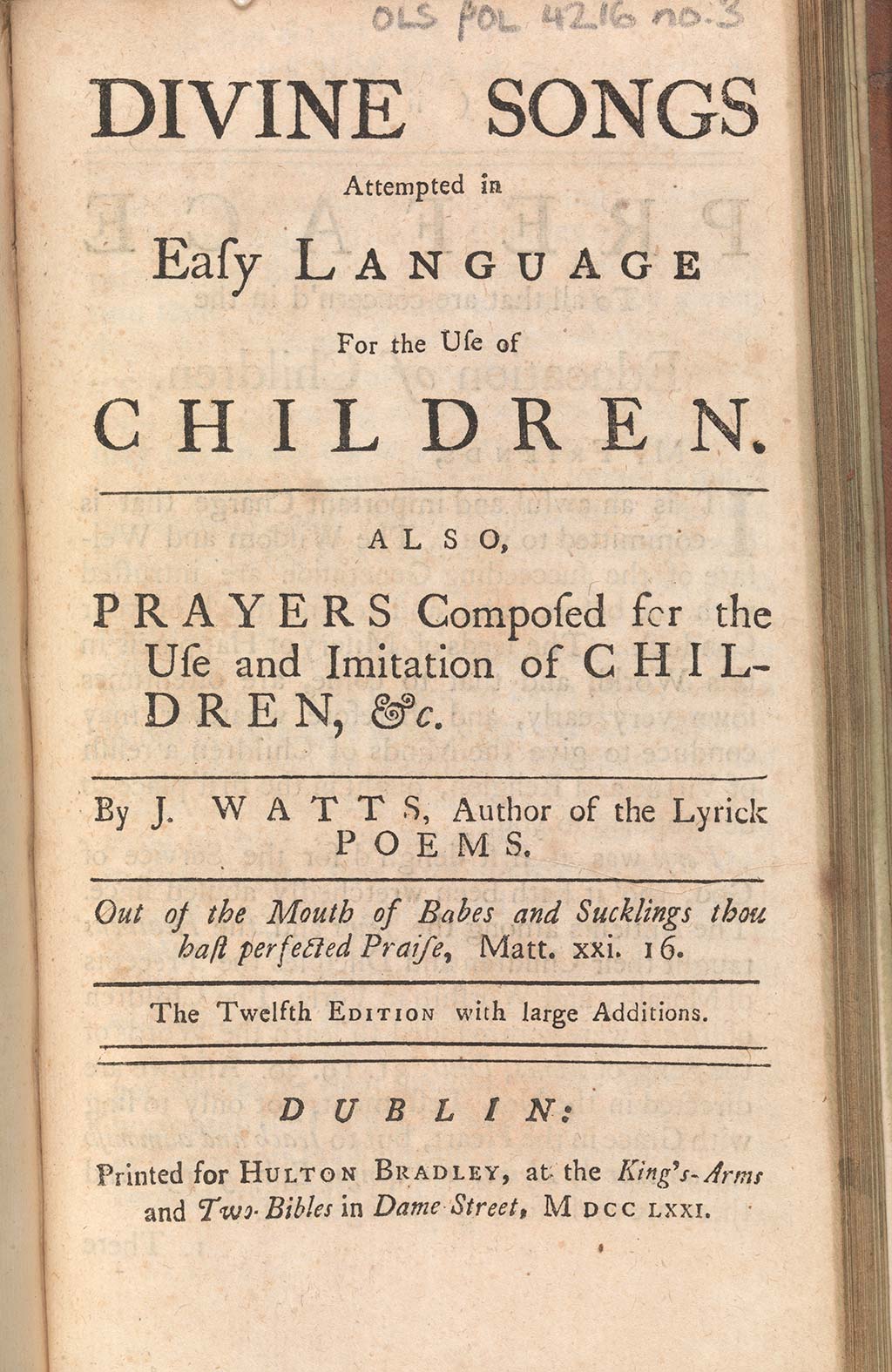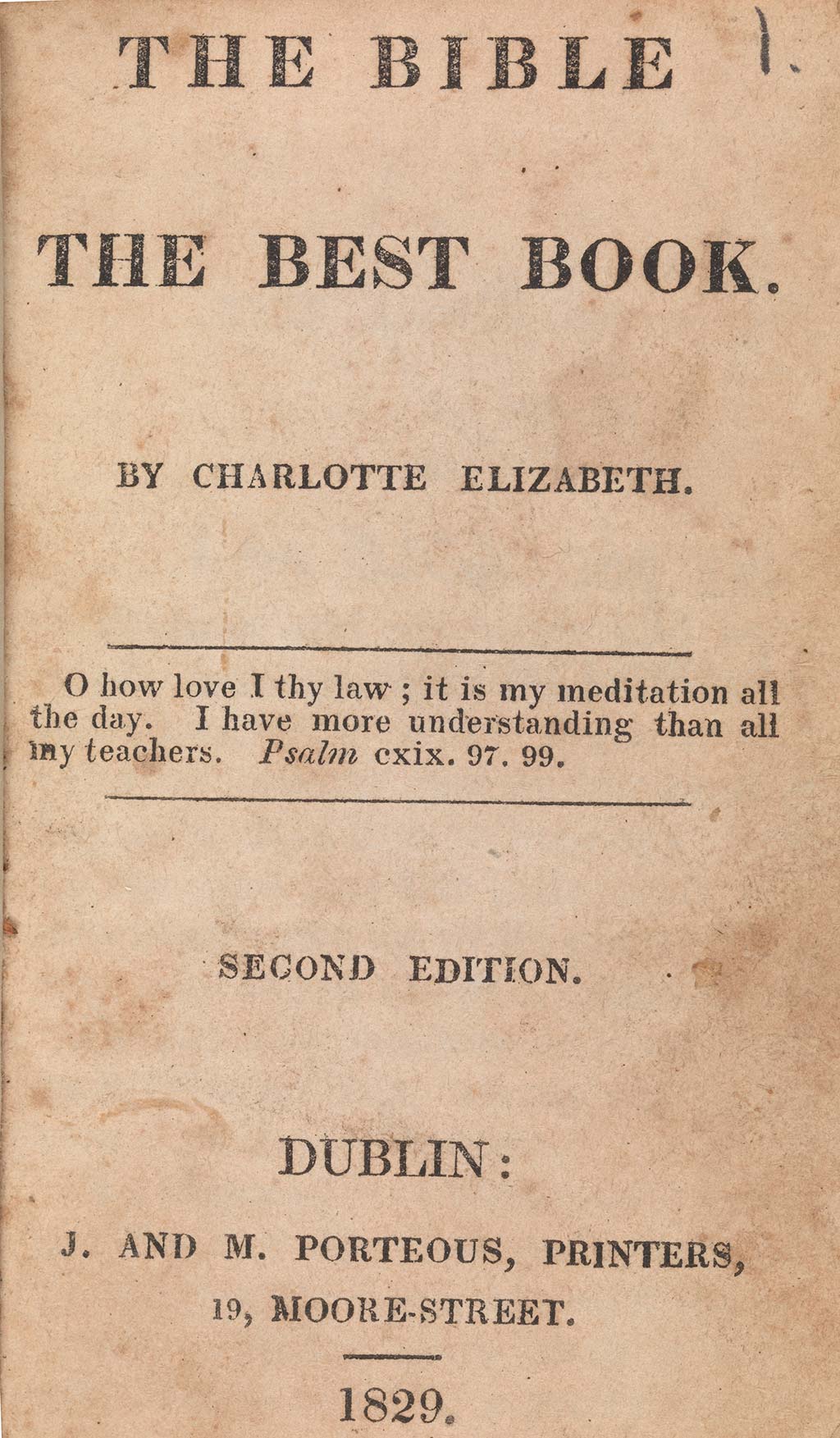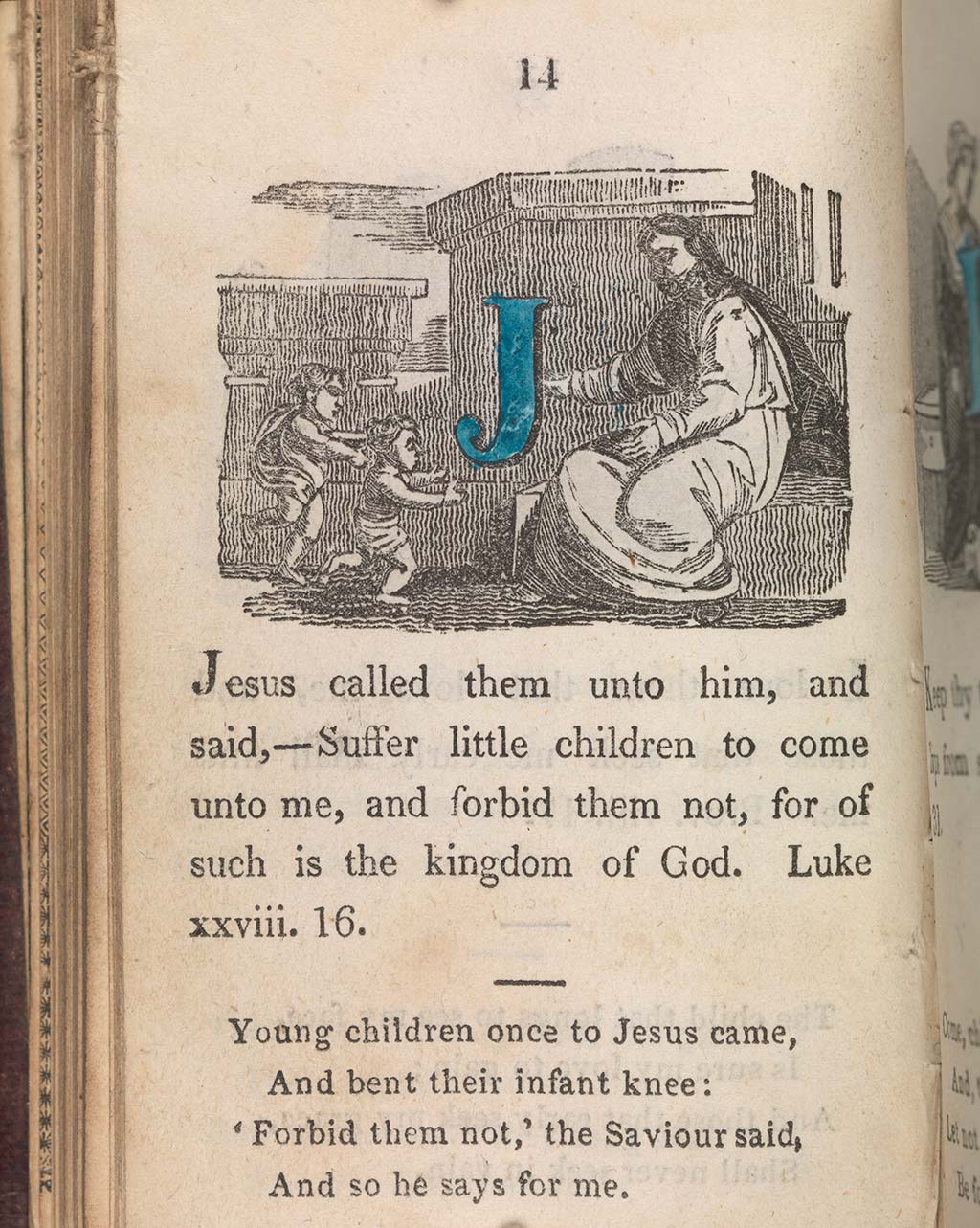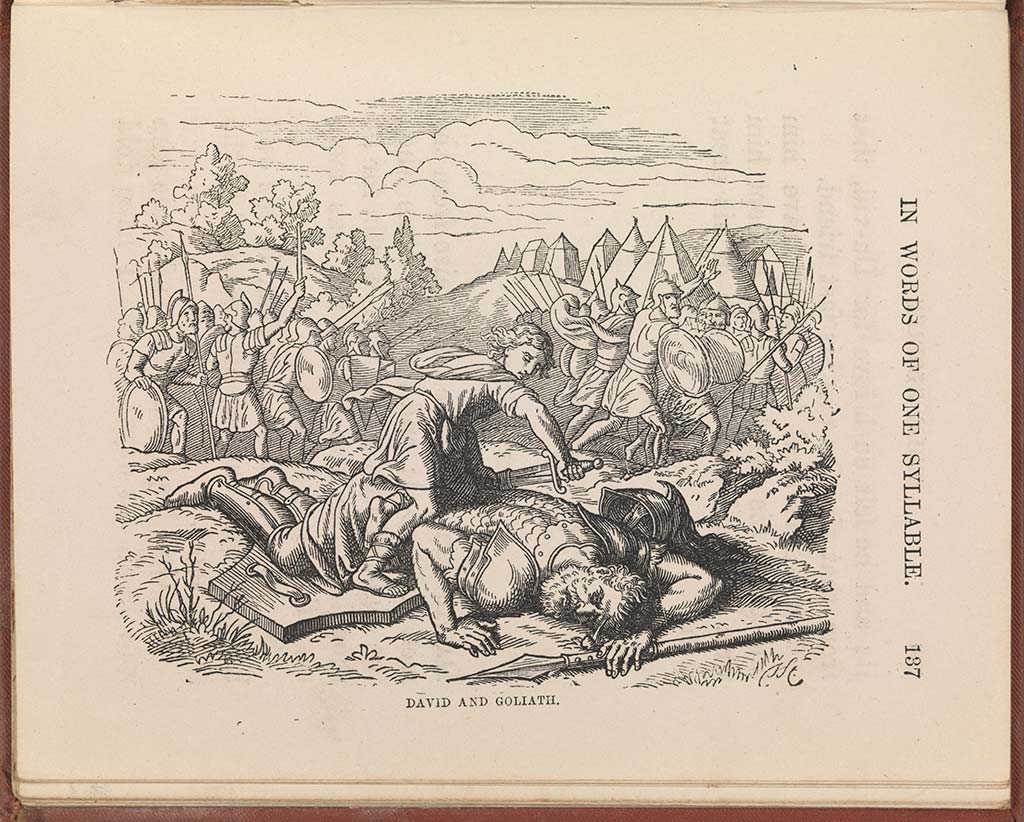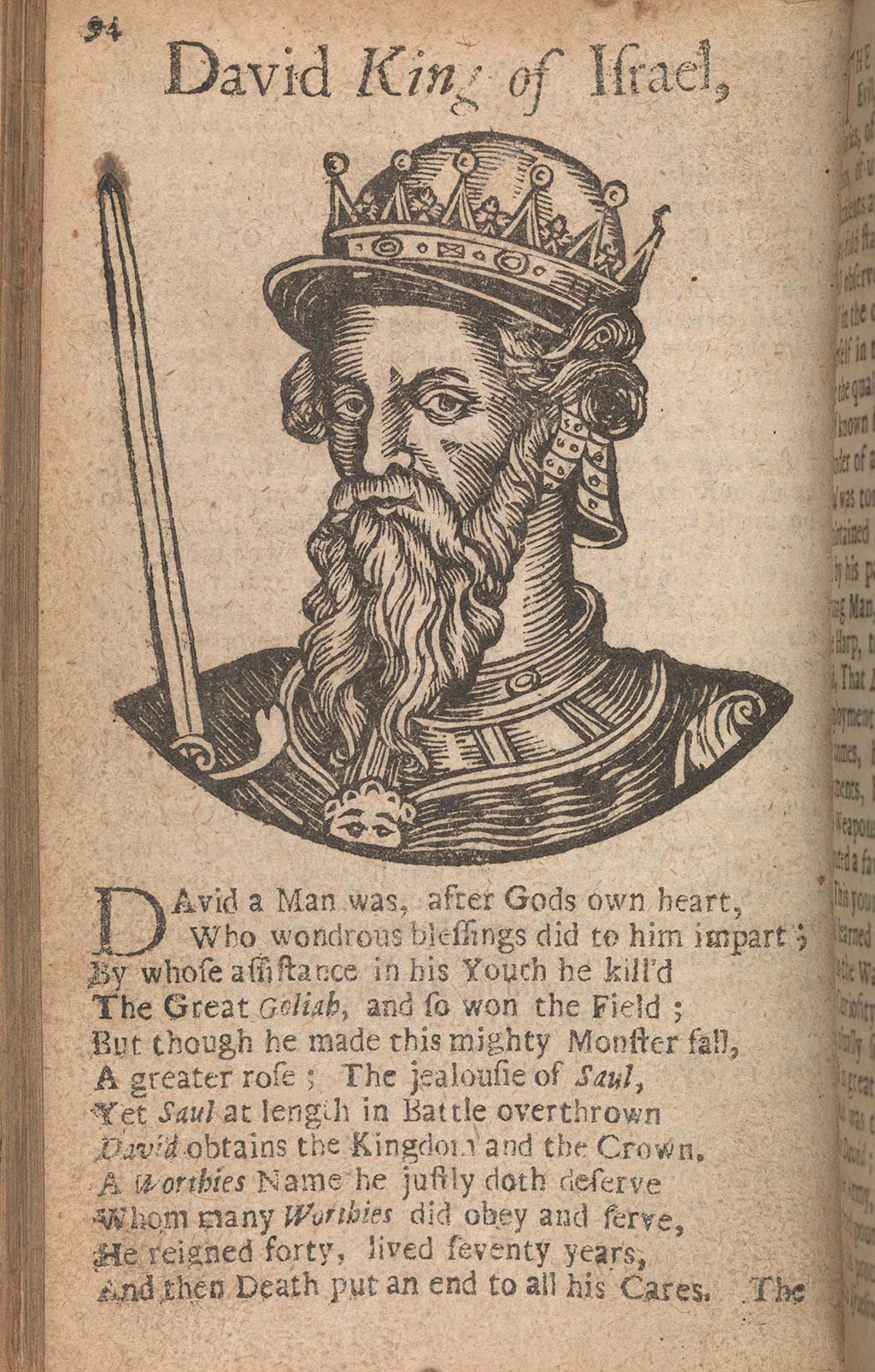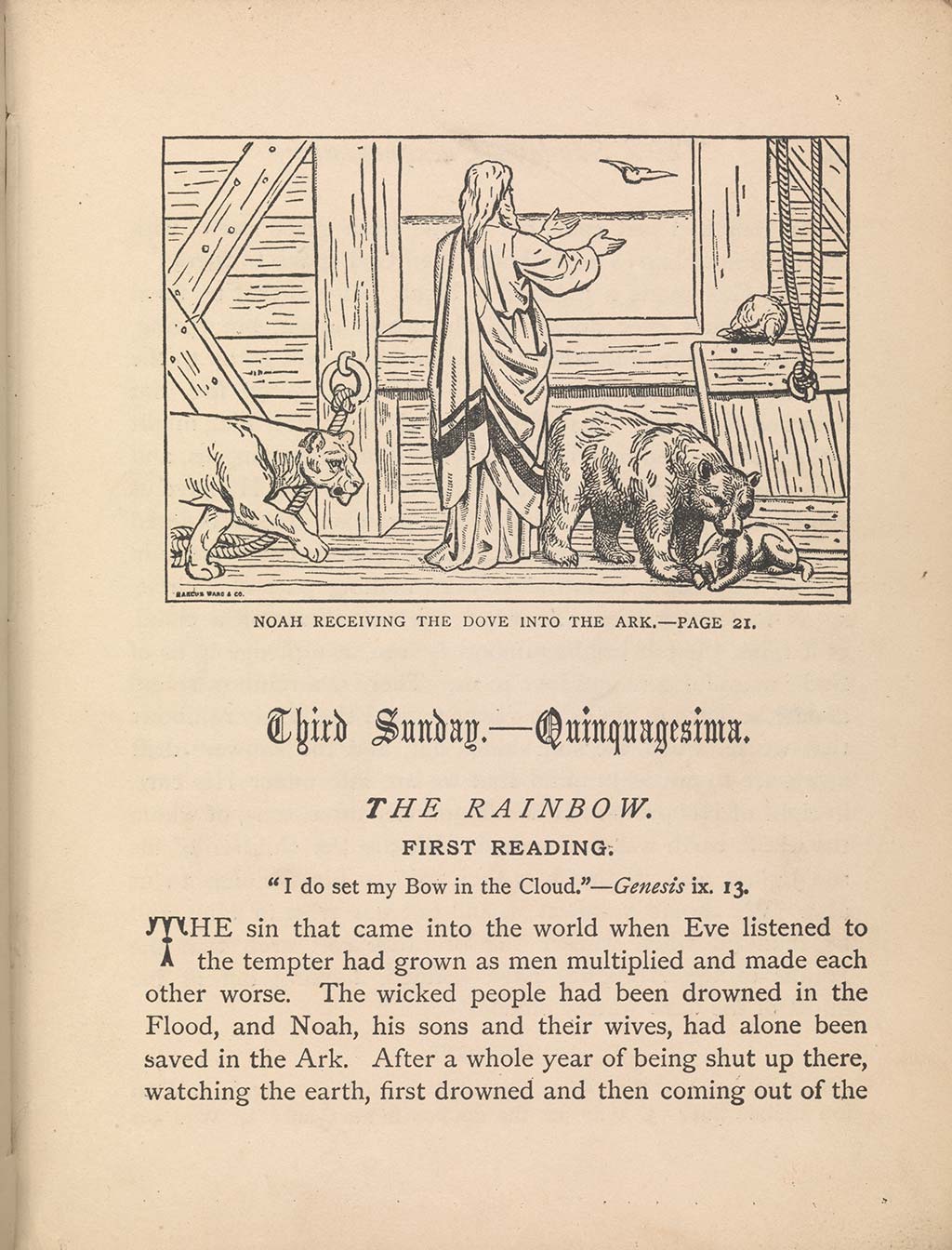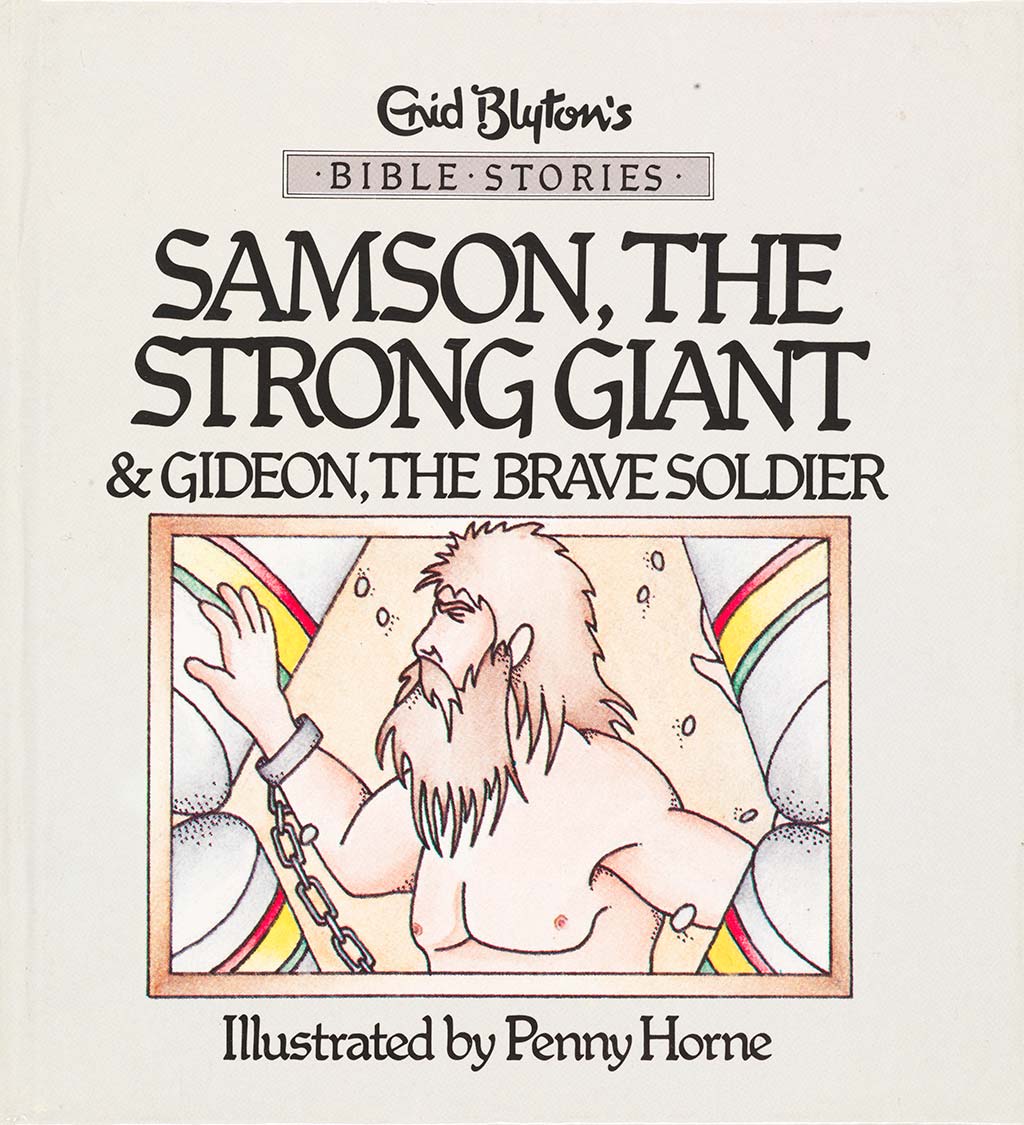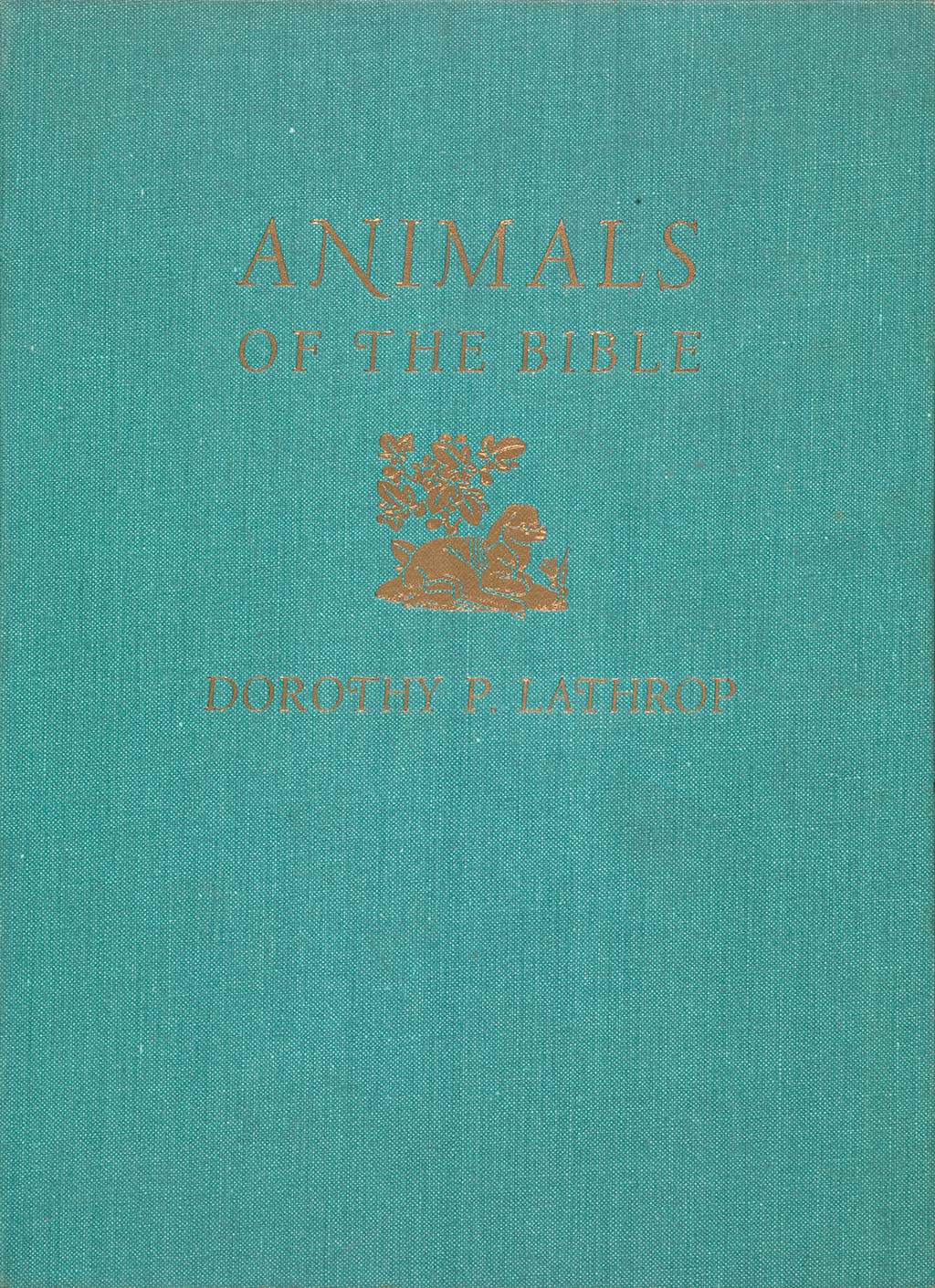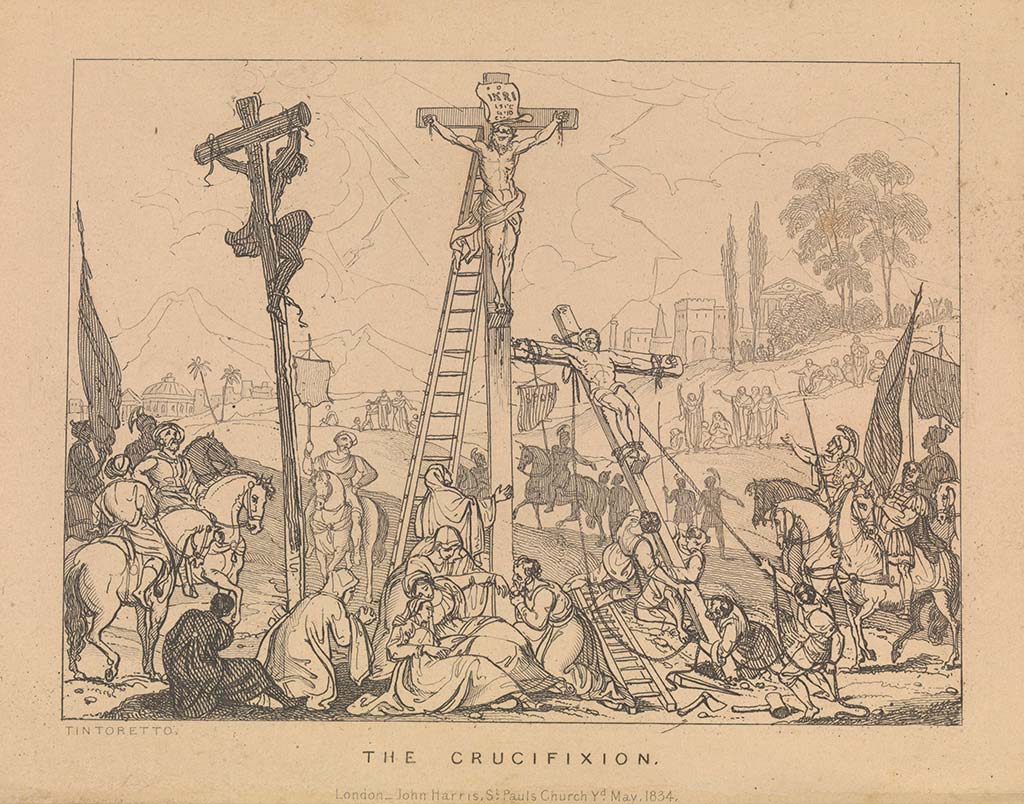Biblical Myths
Religions can provide rituals that ensure the perpetuation of myth, reinforce a notion of shared values and ideologies in particular cultures, and help enforce social structures and modes of behaviour. Many religions place emphasis on the story as history, as Judaism, Christianity and Islam do, whereas in others, such as Hinduism, history is largely illusory.
The Judeo-Christian creation story in the Book of Genesis represents a cosmic tale that places humans at the centre of the universe, providing them with power and significance. Throughout the Bible, several figures from both the Old and New Testaments conform to the hero archetype.
Early children’s literature is heavily influenced by biblical tales, with many authors using such stories to write didactic and instructive narratives in an attempt to encourage readers to adopt strict moral codes. A number of contemporary writers continue to retell these tales, promoting the idea that they reveal a timeless message. Other authors rewrite such narratives and challenge the ways in which bible stories were often used to present an apparent truth.
Creation
A short history of the Bible and testament, with 48 neat engravings designed by Alfred Mills
London, 1807
Pollard Box 2122
The illustrated Bible. Also, verses entitled Railway to heaven
London, [1860-1869]
Pollard Box 2122
The Bible was one of the first books adapted for child readers and biblical teachings were at the core of the spiritual and moral writings of some of the earliest authors of children’s literature, such as John Bunyan and James Janeway. Bible books took many forms; thumb Bibles, illustrated versions, chapbooks, and so on.
Cecil Frances Alexander
Hymns for little children
London, [1867]
Gall.L.14.61
Mrs Cecil Frances Alexander (1818–1895) was born in Eccles Street in Dublin. She is best known for her children’s hymns ‘Once in Royal David’s city’, ‘There is a Green Hill Far Away’ and ‘All Things Bright and Beautiful’, all included in Hymns for little children (1848). In ‘All Things Bright and Beautiful’ Mrs Alexander represents the Judeo-Christian God as the creator of all things, including class – “God made them, high or lowly, / And ordered their estate” – thus encouraging the poor and the working-class to be content with their station in life.
Ann and Jane Taylor, Isaac Taylor sr. and jr, Adelaide O'Keeffe, and Bernard Barton
Original poems, for infant minds
London, 1805
OLS POL 3855
Original poems, for infant minds (1804-05) was written largely by sisters Ann Taylor (1782-1866) and Jane Taylor (1783-1824) and published during a period that saw a significant increase in the number of poetry collections created for children. Many of their poems are cautionary tales. The lyrics of the popular lullaby ‘Twinkle, twinkle, little star’ come from the poem ‘The star’ found in the Taylors' 1806 collection, Rhymes for the nursery.
Mrs Sarah Trimmer
A series of prints taken from the Old Testament; designed to illustrate Mrs. Trimmer's Scripture lessons from that portion of the holy scriptures
London, 1817
OLS POL 3662
Mrs Sarah Trimmer
A description of a set of prints of scripture history: contained in a set of easy lessons
London, 1817
OLS POL 3671
Mrs Trimmer (1741-1810) was an English educator and evangelist, and wrote a number of biblical and moral primers (small books used to teach children how to read). Her work had a profound influence on the development of children’s literature. She founded several Sunday schools and established the first regular children’s book review journal, The Guardian of Education (1802-06). This journal published reviews that were often critical of fairytales, suggesting that they could injure children’s minds.
Philip Pullman
His dark materials
London, 2011
SHL-120-747
Northern lights (1995), The Subtle knife (1997) and The amber spyglass (2000), make up Englishman Philip Pullman’s His dark materials. His dark materials is a fantasy that follows two children who challenge authority, refuse to be bound by the teachings of the Church, and are forced to create their own moral codes. Throughout the series Pullman reworks the Judeo-Christian myths of paradise, sin and redemption, and depicts characters who recognise the nourishing potential of stories.
Cover reproduced by permission of Scholastic Ltd.
Learning through Bible stories
Isaac Watts
Divine songs attempted in easy language for the use of children
Dublin, 1771
OLS POL 4216 no.3
Isaac Watts (1674-1748) was an Englishman and a Puritan who wrote over 600 hymns. Divine songs (1715) is one of the earliest examples of verse for young readers and is concerned with the apparent sinfulness and wickedness of all children. Throughout his verse Watts tried to appeal directly to child readers by adopting an informal tone. His work remained popular up to the end of the 19th century and was used as a textbook in schools.
Charlotte Elizabeth
The Bible: the best book
Dublin, 1829
OLS POL 6328 no.1
Mrs Charlotte Elizabeth Tonna (1790-1846) wrote many books for children and, in the 1820s, a number of her texts were published by the Religious Tract and Book Society for Ireland. In The Bible: the best book, she uses a form of dialogue between a mother and her two children to explain the importance of the Bible. Born in England, Tonna lived in Ireland for several years. She was anti-Catholic in her outlook and became interested in the Protestant cause in Ireland.
Anon.
The infant’s scripture alphabet, in prose and in verse
London, 1828
OLS POL 6330 no.7
Didactic and instructional literature produced for children in the 18th and 19th centuries took many forms – religious, devotional, educational, and moral. Many alphabet texts formed part of primers, and woodcuts were often included to aid in the learning process.
M.A.B.
Bible stories in words of one syllable
London & New York, [1878]
OLS POL 235 no.1
Published by the Society for the Promotion of Christian Knowledge, Bible stories: in words of one syllable uses simple language to grant developing readers access to tales from the Bible. The story of David and Goliath is one of the most popular biblical stories retold for children; the representation of a small person who is able to exit the battle victorious can have a particular resonance for younger readers.
Nathaniel Crouch [‘R.B’]
The history of the nine worthies of the world
London, 1695
OLS POL 5622
Nathaniel Crouch wrote a number of historical texts under the pseudonym Robert Burton or R.B. and was known for simplifying versions of history to make them accessible to a more general readership. Held in the Pollard Collection of Children’s Books, The history of the nine worthies (1687) tells the stories of nine heroic figures: David, Hector, Alexander the Great, Julius Caesar, Joshua, Judas Maccabeus, King Arthur, Charlemagne, and Godfrey of Buillon.
The story of David also features in Aidan Chambers’ groundbreaking Young Adult novel, Dance on my grave (1982), which is narrated by a teenage boy (Hal) who has a sexual relationship and falls in love with another boy (Barry). Chambers uses the story of David and Jonathan – and their love for each other – as a means of validating and providing a context for the same-sex love affair between Hal and Barry. Indeed, debates on the status of same-sex relationships continue in the 21st century to draw upon biblical stories to support certain arguments.
Biblical Heroes
Charlotte M. Yonge
Aunt Charlotte’s stories of Bible history for the little ones
London, [after 1882]
OLS POL 4416
Charlotte M. Yonge (1845-1901) was born in England and wrote over 250 books. In Bible history she presents readers with three short readings for each Sunday as a means of introducing them to scripture lessons.
Myths similar to the story of Noah and the Flood can be found in many cultures (including the earlier stories of Gilgamesh) and usually represent the opportunity for renewal, with water symbolising a cleansing or purification.
Enid Blyton
Illustrated by Penny Horne
Samson, the strong giant & Gideon, the brave soldier
London, 1985
HB-33-310
Englishwoman Enid Blyton (1897-1968) is one of the best-selling authors of children’s literature of all times, with over 600 million copies of her books sold worldwide. Since the 1960s, her work has been criticised because of its questionable literary merit and for perpetuating sexist and racist stereotypes.
The story of Samson, an archetypal hero, follows the same pattern of many problematic patriarchal myths. Delilah is represented as a femme fatale whose betrayal leads to the destruction of her own people and to Samson’s death by suicide.
Cover reproduced by permission of HarperCollins Publishers Ltd.
©1985 Templar Publishing Limited
Dorothy P. Lathrop
Animals of the Bible
London, 1938
JUV 189.n.17
Dorothy P. Lathrop (1891-1980) was a noted American author and illustrator of children’s books. Her book Animals of the Bible (1937) won the inaugural Caldecott Medal (1938).
In the Bible’s ‘The Book of Jonah’, Jonah’s journey conforms to the hero pattern or monomyth. His rebirth and return with new knowledge is represented by his emergence from the whale. Similar symbols of rebirth can be found in the heroic tales of Fionn MacCumhail, Hercules, and Maui.
Lucy Sarah Atkins Wilson
Mamma’s Bible stories, for her little boys and girls: a series of reading lessons taken from the Bible, and adapted to the capacities of very young children.
London, 1834
OLS POL 5184
The story of the birth, life, death, and resurrection of Jesus has taken many forms in literature for children. In the eight editions of Lucy Sarah Atkins Wilson’s (1801-1863) didactic Mamma’s Bible stories, the tales are told in the form of questions and answers between a mother and her children. Christian ideas are also central to the narratives of The chronicles of Narnia, written by Irishman C.S. Lewis (1898-1963). In The lion, the witch, and the wardrobe (1950), the character of Aslan – who sacrifices himself for the sins of Edmund and is later resurrected – is easily read as a Christ figure.

